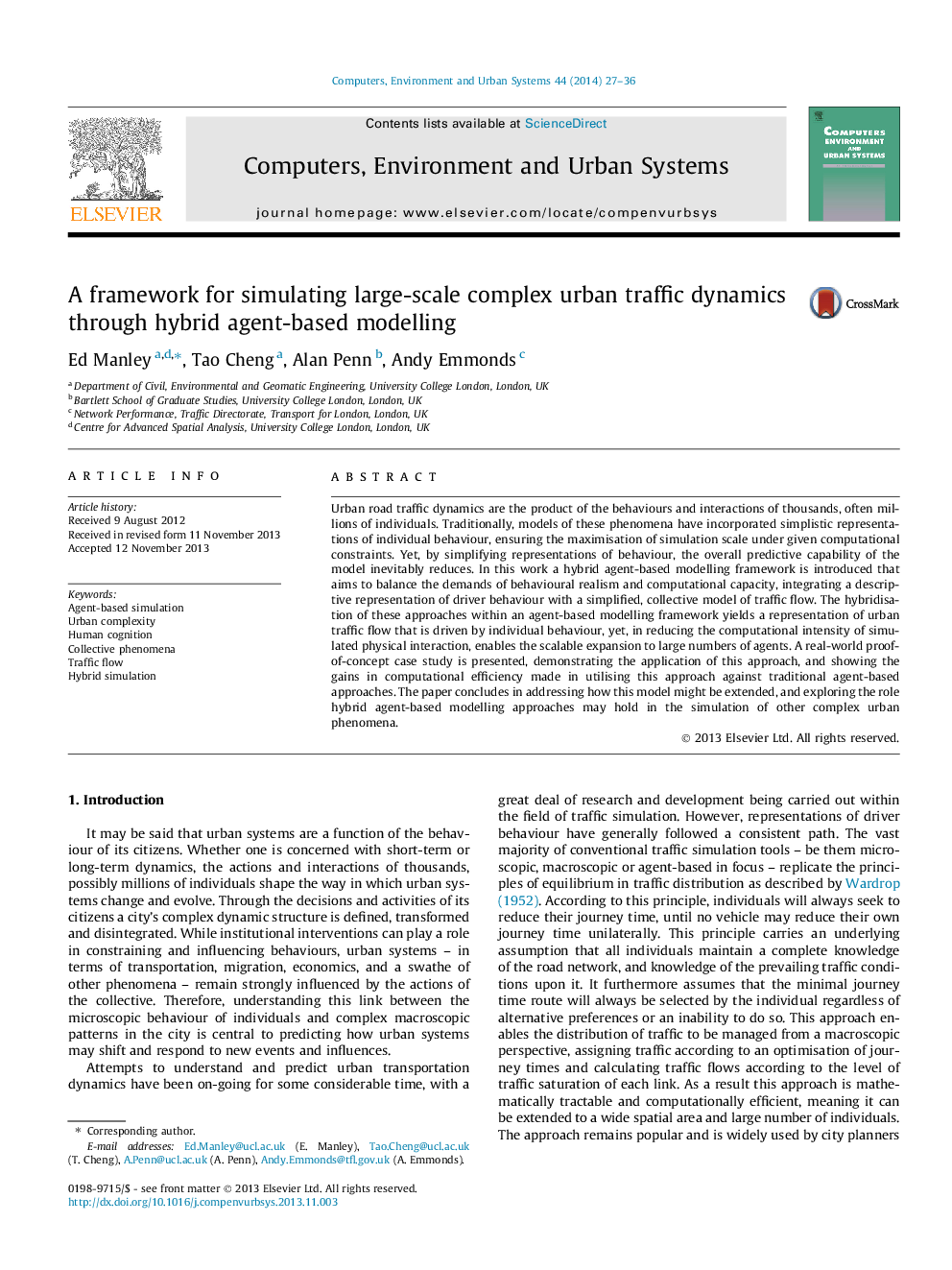| Article ID | Journal | Published Year | Pages | File Type |
|---|---|---|---|---|
| 506355 | Computers, Environment and Urban Systems | 2014 | 10 Pages |
•Conventional theories of spatial cognition implemented within model of agent behaviour.•Road segment-level model of traffic flow used to simplify computation of agent interactions.•Behavioural and traffic flow models incorporated in hybrid agent-based model.•Computationally efficient approach demonstrated to enable large-scale simulation.
Urban road traffic dynamics are the product of the behaviours and interactions of thousands, often millions of individuals. Traditionally, models of these phenomena have incorporated simplistic representations of individual behaviour, ensuring the maximisation of simulation scale under given computational constraints. Yet, by simplifying representations of behaviour, the overall predictive capability of the model inevitably reduces. In this work a hybrid agent-based modelling framework is introduced that aims to balance the demands of behavioural realism and computational capacity, integrating a descriptive representation of driver behaviour with a simplified, collective model of traffic flow. The hybridisation of these approaches within an agent-based modelling framework yields a representation of urban traffic flow that is driven by individual behaviour, yet, in reducing the computational intensity of simulated physical interaction, enables the scalable expansion to large numbers of agents. A real-world proof-of-concept case study is presented, demonstrating the application of this approach, and showing the gains in computational efficiency made in utilising this approach against traditional agent-based approaches. The paper concludes in addressing how this model might be extended, and exploring the role hybrid agent-based modelling approaches may hold in the simulation of other complex urban phenomena.
